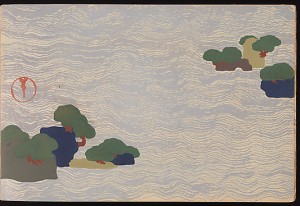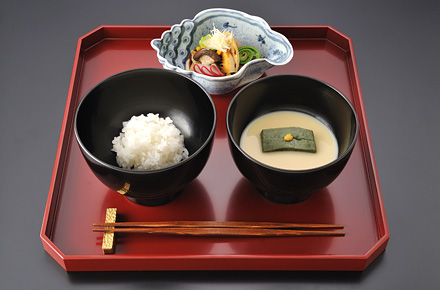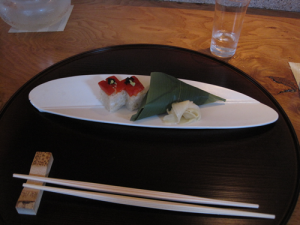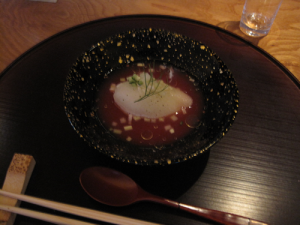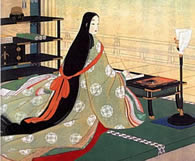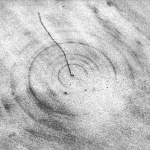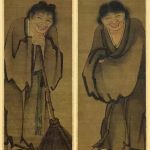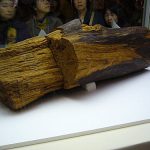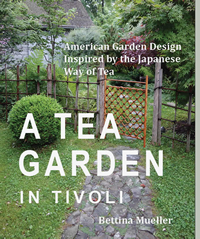Things That are Near Though Distant
Sei Shonagon is very brief in her list of ‘Things That are Near Though Distant’. She lists:
- Paradise
- The course of a boat
- Relations between a man and a woman
I’m sure she’d agree with my addition of Rainbows
Rimpa
“Rinpa” is a modern term that refers to a distinctive style of Japanese pictorial and applied arts that arose in the early seventeenth century and has continued through modern times. Literally meaning “school of Korin,” Rinpa derives its name from Ogata Korin (1658–1716), a celebrated painter from Kyoto. It embraces art marked by a bold, graphic abbreviation of natural motifs, frequent reference to traditional court literature and poetry, the lavish use of expensive mineral and metallic pigments, incorporation of calligraphy into painting compositions, and innovative experimentation with new brush techniques.
Things that give you pleasure – You’ve seen many Japanese screens of iris but never the cobalt blue of morning glories on gold.
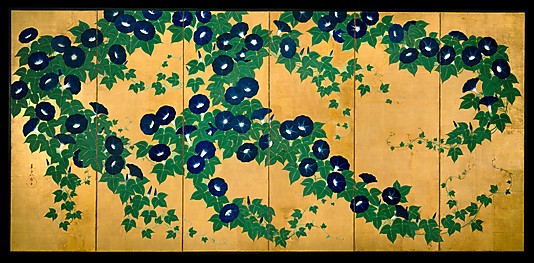
It’s also wonderfully pleasing to see books illustrated with gold and silver that are so modern and utterly beautiful they make you want to take them home.
We had high hopes
Once in awhile my friend Seiko and I treat ourselves to a Kaiseki meal at a new restaurant. Kaiseki is a seven course meal served during a tea ceremony made up of small tidbits of seasonal food. Last year we went to Kajitsu which specializes in Shoin cuisine, Zen temple cuisine. We loved everything about it: the food, the atmosphere, the presentation were all sublime.
This past weekend we went to Brushstroke. They describe the restaurant as Kaiseki, a French/Japanese fusion “concept”. We should have been clued in by the word “concept”.
We sat at the cooks bar and looked into the busy kitchen. The restaurant was filled mostly with Japanese who are fascinated to try out their cuisine with a French twist. The weather had turned very hot, the air conditioning had broken and the place was stifling. We were encouraged though when the waiter brought us complimentary cold sake and a small bowl of lemon ice with a promise of more wonderful treats to come.
I ordered the eight course vegetarian menu and Seiko had the tasting menu which turned out to be six courses. As the hours ticked by Seiko sat with an empty tray while I was served course after course. It felt rude to be eating while she sat waiting. It wouldn’t have been so obvious and painful if the courses had been served quickly one after the other. After all, they were just tidbit size.
We were there for a sweltering three hours. Something had gone wrong in the kitchen. The cooks looked busy enough, but we waited 20 or so minutes at least in between courses.
Some of the food was good, like the watermelon soup with a quenelle of fennel ice. But the dashi broth, which is considered the essence of Kaiseki and used for the soups and broths, was gloopy, viscous and tasteless. Most unpleasant.
On the whole, we couldn’t wait to leave and get out into the fresh air. Thumbs down for Brushstroke.
Nothing is more splendid than rank
Sei Shonagon said there is “…nothing more splendid than rank”. She was referring to the rank of nobility in medieval Japan. But I’m referring to my nephew Nick LaCava and his bid for the US Olympics. We leave for Switzerland on Friday to cheer his boat, the Lighweight Mens 4, in qualifying for the 2012 Olympics in London. I can’t believe it.
In case you don’t know, rowing is a demanding sport. Just take a look at Nick in this photo (he’s the one wearing sunglasses in the lower right)
The London Times says
“You don’t have to be super-skilled to be good at rowing; there’s basically just one simple sequence of movements to learn in order to master the technique.
The hard part is repeating that sequence, up to 40 times a minute, for six or more minutes. Strength and endurance are obviously essential. If you are rowing in a crew, synchronisation and teamwork are also necessary.
Also, before we forget, size does in fact matter in rowing. In 2007 Dr Niels Secher, an exercise scientist at the University of Copenhagen, was able to predict the speed of rowers accurate to one per cent based on their body size and weight of their boat.
He found that taller, more muscular rowers (often over 6ft 3in and 15st) with low levels of body fat were able to get more oxygen in their muscles and generate more power.”
I think the London Times is understating things a bit. Rowing is a punishing sport that requires tremendous drive, endurance and years of dedicated training.
We’re hoping that Nick and his boat will qualify for the Olympics. We’ll know by next Wednesday. But even still, to get this far is an incredible achievement. A well known Zen phrase is ” Buji Kore Kinin”. Translated this means “A noble man is one without rank” or “True man without rank”. As Zen students this is what we aspire to in our practice. In Nick’s case, we’re thrilled at his ranking – just as it is.
Note: Nick did make it to the 2012 London Olympics and they did really well. He’s now going back to Grad school but misses the competition on the water.
Bunny cake – among life’s most splendid things
It’s Easter and my sister made a bunny cake.
I contributed the ears and tail made from meringue. The nose is a blackberry and the eyes licorice jelly beans.
We colored some cocoanut green and spread it around the bunny to look like grass.
It’s really easy to make. Here’s a diagram. Be sure to put frosting between the two halves. Don’t make paper ears. Make meringue. Color a small amount pink for the inside of the ears.
 Here’s a better photo, but we still haven’t put in the grass!
Here’s a better photo, but we still haven’t put in the grass!



